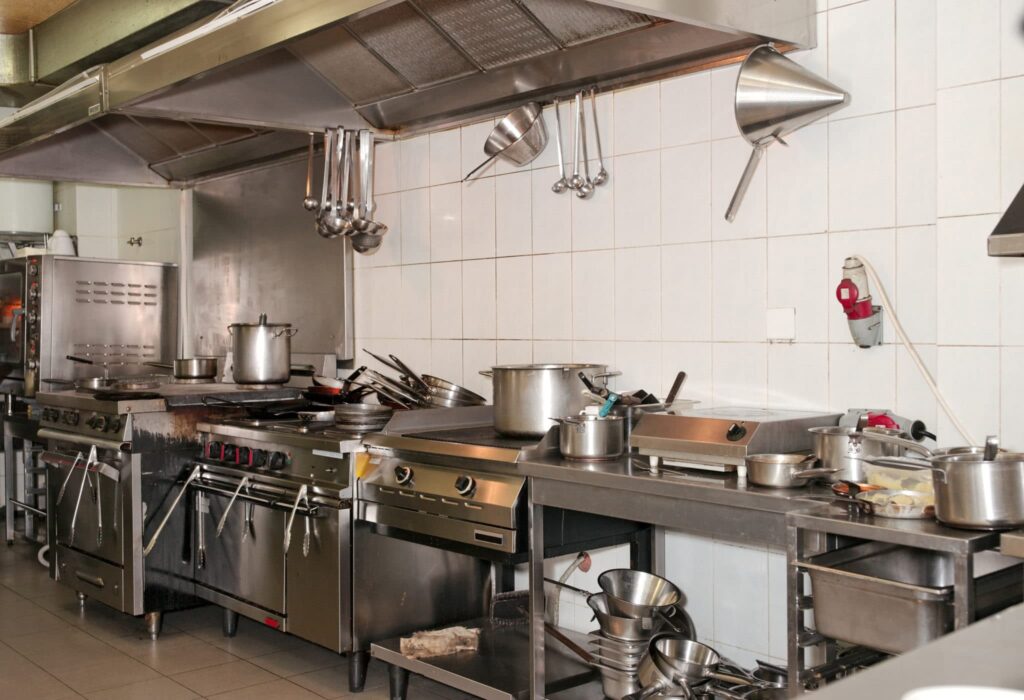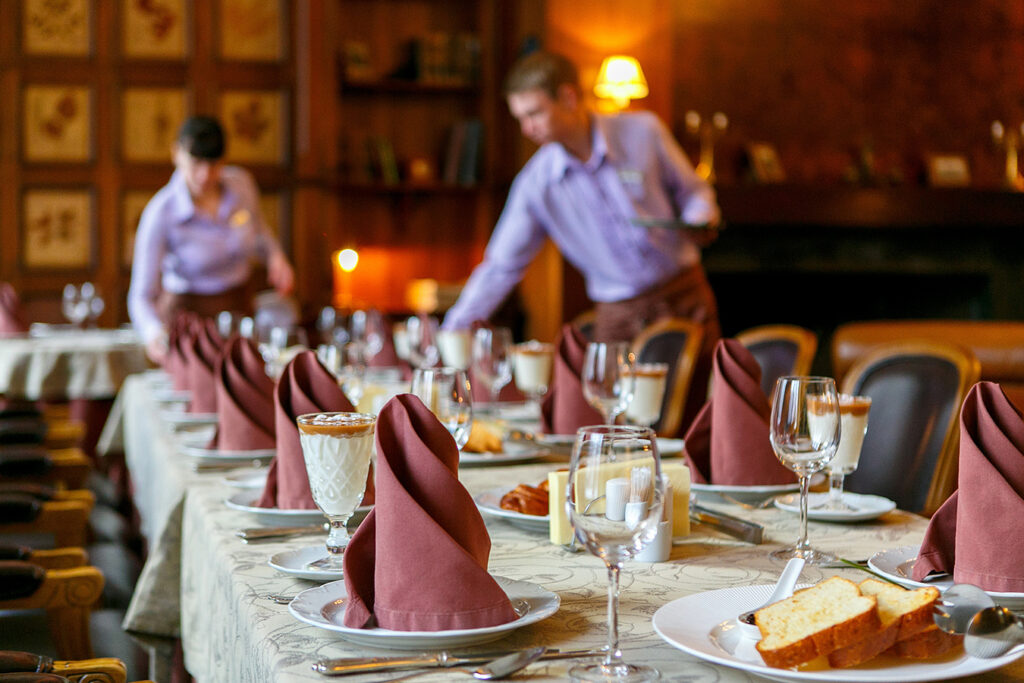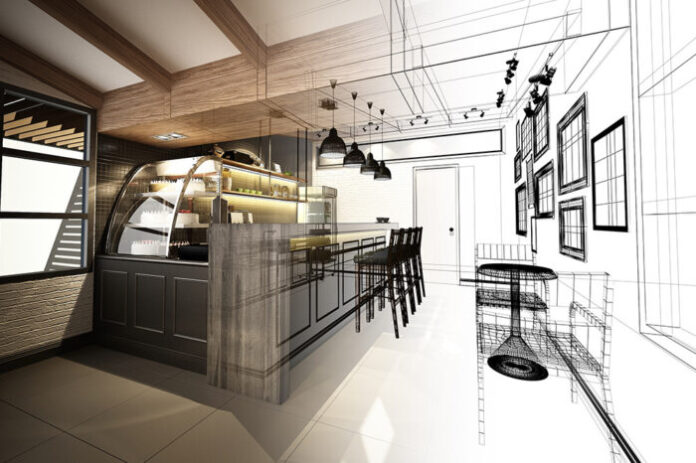Starting a restaurant is a difficult and time-consuming endeavor. Many new restaurants begin with a fantasy, one that entails creating a delectable cuisine that would be served in a beautiful restaurant with attractive décor and an engaging ambiance.
According to Owais Durrani, co-founder at TheTexasTasty, “Managing a restaurant can be more challenging than managing any other sort of business. If you are excited to step foot in the restaurant industry, you must take your time and plan ahead, especially when it comes to managing your finances”.
You’ll need to scrimp and save wherever you can, especially in the areas listed below.
1. Make a Plan

As much as you would wish for a custom-built facility that is a perfect match for your brand and restaurant character, you don’t have the funds to do so at this point in time. In fact, if you have the option of moving into a facility that has previously been used as a restaurant, you may want to do so in order to avoid incurring as much construction expenditures as possible. Depending on the modifications that are required, the quality of the materials used, and other factors, construction and renovation can cost a restaurant anywhere from $150 to $750 per square foot. This implies that if your restaurant is in the usual size range of 1,000 to 10,000 square feet, you might be looking at a bill ranging from $150,000 to $7.5 million only for the construction of the building. For restaurant operators with limited financial resources, remaining on the lower end of the financial range is essential.
Unfortunately, many restaurant owners are unaware of where a significant portion of their construction expenditures is spent since they employ a contractor to oversee the project. While this is obviously handy — and assures a finish of a better quality than you could achieve on your own — it also frequently makes it difficult to see where your money is being spent. Instead, engage individual craftsmen and then hire a contractor to oversee the entire process. As a result, you will know precisely how much each service will cost, avoiding inflation caused by the contractor, and you will be able to select the finest service providers for the work.
2. Kitchen Equipment

New restaurant equipment is a source of excitement for any aspiring restaurateur since it is gleaming, packed with intriguing features, and radiates professionalism. Visiting a commercial kitchen showroom is similar to visiting a luxury vehicle dealership in terms of how it dazzles and allures the customer to come in. New restaurant equipment, on the other hand, is prohibitively expensive. In order to completely outfit a commercial kitchen with brand-new equipment, it may easily cost more than $500,000, yet, like with luxury automobiles, once kitchen equipment leaves the lot, its value instantly diminishes.
3. Cooking Utensils

Instead, for your first restaurant, you should purchase gently used cooking equipment from a local vendor. When compared to the pricing of brand-new burners, ovens, fryers, and other similar items, secondhand equipment is far less expensive. Even better, you might be able to negotiate the retention of any equipment that is still in your restaurant’s possession. Repairing outdated models using commercial kitchen replacement parts is far more cost-effective than purchasing new equipment from the ground up in the first place. The fact that they are not minor cost savings implies that they are extremely important cost-saving strategies for new restaurant owners.
4. Linens

Linens are provided in all of the fanciest restaurants — but your establishment does not have to be a pricey one. Even while linens appear to be a low-cost item at first glance — a few hundred dollars for a sufficient number of tablecloths and napkins — their care is both time-consuming and expensive. In restaurants, linens are abused; they rapidly become stained and soiled with food smears, and they must be cleaned, sanitized, and changed on a regular basis in order to keep up with demand. In the absence of a white-glove service institution, you should definitely consider doing away with linens, save for special occasions such as catering, and investing in attractive tabletops in their place.
5. Food Expenses

For many companies, keeping expenses under control is critical to their success. Despite this, many companies overpay on food expenditures and provide substandard meals. It might be difficult to avoid overspending on food, but there is a technique to keep food costs under control for businesses.
To begin, resist the temptation to go an expensive, upscale food seller. Make contact with local farmers and cooperatives. Establish relationships with a number of suppliers and collaborate with them to secure pricing lock-ins.
Take a look at your menu. Reduce the number of options available in order to streamline the purchase and preparation process.
Identify waste-producing locations. Pay close attention to how much food is returned to the kitchen and re-evaluate your portion sizes if necessary. Your profit margins will increase if you reduce the serving size while keeping the cost the same.
Finally, make sure to consider your options and avoid overspending. That freshly picked lettuce from the farmer’s market isn’t going to survive the entire week. Throwing it away contributes to your expenditures and increases the probability that you will go over your financial limit.
6. Remodeling / Decorating

Whether a company is simply redecorating or completely rebuilding a space, adorning the dining room is an expensive expenditure. It doesn’t take long for these expenditures to build up and deplete the already limited beginning budget. You can save big by contacting Restaurant-Furniture.com for their deals on commercial-grade furniture that comes with a warranty of up to 7 years.
Make a decision on what is most essential. Is it the $2,000 chandelier or the art deco artworks that have you perplexed? Try to avoid big costs such as shifting walls if at all possible.
In their haste to get everything perfect, entrepreneurs sometimes overlook the fact that focusing on a few high-impact items may provide significant returns on investment. Paint colors, finishes, good lighting, some affordable landscaping, and unusual upholstery options may all help startups create a fantastic ambiance in their offices.
Startups would do well to keep in mind their typical meal price and provide the appropriate amount of money for decoration. The key is to make impactful remarks without going overboard with the expense. Decorating ideas on a budget may be found on websites such as Pinterest.
When it comes to designing and renovating, don’t forget to account for the unexpected. If you have a contingency plan in place in case your contractor detects a leak in the ladies’ room, you won’t have to worry about going over budget. Don’t allow unexpected expenses to catch you off guard.
7. Sales and Marketing

When it comes to sales and marketing, it’s quite simple for companies to overpay, especially if marketing isn’t something they’re very familiar with.
Either the restaurant owner is persuaded into signing an agency contract because he or she lacks sufficient marketing knowledge, or, instead of utilizing alternative low-cost marketing tactics, entrepreneurs rush out and engage pricey advertising agencies or sales teams to get their name out there. Startups look to these ad agency teams to create large, eye-catching advertising campaigns, sometimes before conducting any market research.
When a business receives venture capital funding, they are often overjoyed. They believe the moment has come to spend, spend, spend, and advertising appears to be a feasible option. It’s not so good if the firm needs to pay a large repair charge a short time after its launch.
It is necessary for the restaurant startup to advertise their new establishment. So, how can a company manage marketing without going overboard with expenditures?
- Utilize the Internet to your advantage.
- Join social media sites such as Facebook and Twitter.
- Adverts on low-cost social media sites such as Facebook and Twitter should be considered; other social media sites should also be considered.
- Begin a discussion on your website’s blog and social media pages to generate interest.
- Distribute fliers to businesses in the area. To promote recommendations, build a strong network of people.
While television advertising is still a useful source, it isn’t always the one you should start with, especially if you want to avoid overpaying on your marketing budget. Following closely after, according to a recent eMarketer survey, 70% of respondents believe television is important for a brand, with 60% believing social media is significant as well. According to the results of the poll, the next three most useful sources are online display, online video, and mobile.
8. Energy

In today’s world, there’s a reason why so many firms are concentrating on sustainability and eco-friendliness — and it has nothing to do with care for the environment. Instead, companies, including restaurants, want to decrease their waste since doing so significantly lowers their expenditures and enhances the chance of long-term financial success for the company in question. There are a plethora of strategies that new restaurants may use to reduce their energy expenses, including:
Kitchen equipment should be cleaned and maintained. Kitchen equipment that is clean will function efficiently, which means that it will not consume excessive quantities of electricity.
Organize the space in your kitchen. Your ovens and freezers should not be located next to one other, and your dishwashers and ice makers should not be located close to each other.
Make an investment in LED lights. LEDs have gone a long way in recent years; you can buy them in whatever hue and intensity you want to precisely regulate the lighting in your restaurant while also reducing its energy usage by a significant amount.
Turn off any equipment that isn’t essential. Deep fryers should not be used if you are not cooking anything at the time of the inspection. The same is true for lights: when no one is present to use them, turn them off.
Instruct your employees on how to be more productive. A workforce that is environmentally conscious in terms of water and energy will not be interested in squandering resources anyplace, especially on the grounds of your restaurant.
Conclusion
Restaurants are among the most exciting and rewarding new companies to start — but they are also among the riskiest to get started. Keep in mind that, while starting a restaurant has a large number of expenditures, it is critical to have enough cash on hand to cover any unforeseen expenses that may crop up. Poor budgeting and planning have resulted in the demise of a large number of eateries. If you put out significant effort to lower your expenses, you will have a higher chance of achieving restaurant success. Creating a budget and sticking to it, as well as setting aside some money for unexpected expenses, can allow you to deal with any unexpected expenses that arise with relative ease.









